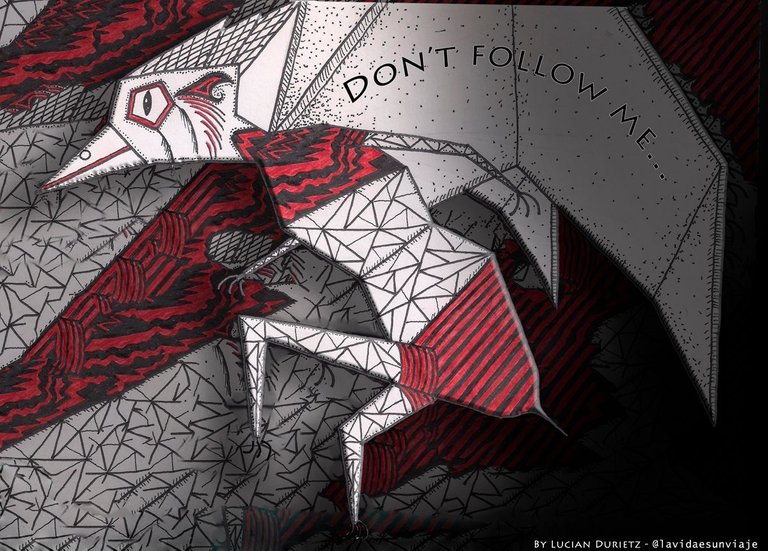Introduction
You might have heard about A.C(alternating current) and D.C( direct current ), this two terms are used to describe current in different forms, although alternating current has numerous advantage when compared to the direct current in electrical system. The generation, transmission and then power distribution conform to the use of 3 phase alternating current system, this alternating current doesn't just come from the sky, it is produce by a machine called Alternator or synchronous generator and the term alternator is used to describe any A.C electrical generator, synchronous generator is actually the primary source of the electrical energy that we do make use of and among all energy converter, the synchronous machine is the largest of all and the production follows different process just to achieve electrical energy.
Alternator

An alternator or Synchronous generator is a machine that makes use of mechanical power (energy ) to achieve electrical power ( energy ) in the form of A.C (alternating current ), just a conversion of mechanical energy to an alternating current form of electrical energy. the operation of an alternator work on same rudimental principle of the electromagnetic induction of a d.c generator, just as the magnetic flux linkage changes which result in electromagnetic force being induced on the conductor, in the case of induction generator, the armature winding is placed right on the rotary part of the induction machine, which enable alternating voltage to be converted to a direct voltage and collected through the commutator. In alternator, the winding is made up of two types which are field winding and armature winding and since the machine doesn't required commutator, it's needful and advantageous to have the armature winding place on the stator.

The two major part of an alternator is the stator which occupy the armature winding and rotor which have the field winding wounded on it. The armature winding is where bulk of fluxes is being generated and has more winding compared to that of the field winding.
Construction Of Alternator
The Synchronous machine works with a 3 phase winding which is referred to a stationary armature winding connected at the stator, with the rotor having the field winding which is connected through a two slip ring to a direct current supply.
•Stator

This is actually a paramount part of the synchronous machine which house slots at its inner peripheral and these slot carries the armature winding, this part of the synchronous machine is insulated and built with sheet-sheel lamination and having it's connection in a star format with the connection of the neutral to ground. With the 3 phase winding at the stator, this result to an easy insulation of the winding to a high voltage of the alternator and this part of the synchronous machine is electrically connected to the load, in the stator field, both torque and voltage are produce and they are affected as a result of the components, the torque produce is affected by the perpendicular component of the stator field while the voltage is actually affected as a result of the parallel component of the stator field
•Rotor

Another paramount part of the synchronous machine but a rotational part of it, the rotor house the field winding and a direct current is feed to the field winding through two slip ring, this direct current source which can also be referred to an Exciter , is actually a puny direct current compound generator and the Exciter is mounted on the shaft of the synchronous machine. The construction of the rotor is of two type and they are
(¡) Cylindrical or Non- salient pole type
(¡¡) Projecting or Salient pole type
○ Salient pole type

In this construction, the salient pole are mounted to a circular steel and the circular steel is connected to the shaft of the synchronous machine, the connection of the field pole is connected in series, causing adjacent pole to have opposite polarities when energized by d.c exciter. various type of synchronous machine such as those power by water or diesel at a speed ranging from 120- 400 r.p.m, applies this rotor type of construction and this is as a result of some advantageous reasons.
○ Non-salient pole type

This type of pole is made up of two parts, the slotted part and the unslotted part and both are in one structure made of smooth solid forged-steel in a cylinder form, these slots which house the field winding are along the outer peripheral while the area of main pole are made unslotted. Same as the projection type, they are connected in series to the slip ring of which they are energized, the alternator driven by steem turbine at a high speed ranging from 1500-3000 r.p.m employs this type of rotor construction.
Operation Of An Alternator
The operation starts from the rotor, in that the rotor winding is being energized as a result of the d.c exciter, this excitation create the south and north pole at the rotor and with the help of the prime mover, the rotor then rotors anticlockwise. During the rotation, electrical fluxes are be cut through the air gap between the rotor and stator to the armature winding on the stator which causes electromotive force ( EMF ) to be induced on each part of the phase as stated in Faraday's law of electromagnetic induction and since the north and south pole created are alternating, this result in alternating electromotive force being induced and the magnitude of the voltage that is being induced on the armature winding depend wholly on the flux from the rotor, the speed rotation of the rotor and also the position and number of the conductor winding, knowing fully well that each phase has thesame magnitude of induced electromotive force but differ in the angle between each phase by 120°. One can account for the direction of the induce electromotive force with the help of Fleming's right hand rule and also frequency.
P = number of poles in rotor
N = The synchronous speed of the rotor which is in r.p.m
F =frequency of the electromotive force (EMF)
Number of pairs of poles= P/2
Number of revolutions in seconds=N/60
Number of revolved cycle in seconds ( F ) = PN/120
Advantage Of Stationary Armature
● The armature winding which is the stationary, can be insulated to accommodate high voltage for which the machine is designed for and this is because they are free from centrifugal force and due to the winding arrangements, there are some extra space.
● Direct connection from the stationary 3 phase to the load without passing through large brushes and slip rings.
● Since the excitation is small, resulting to just two slip ring to connect direct current supply to the rotor winding which is the field winding.
●The d.c field can attain high rotational speed as a result of the robust and simple construction of the rotor.
A.C. Armature Windings


With the advantageous used of non salient pole type, the A.C armature winding are designed in the non salient pole type, having the winding uniformly and symmetrically distributed in the slot and as a result of the uniformly distributed winding, the heat produce during operation is also uniform and can be cold easily, the voltage wave obtain also is almost as close as that of the sine wave curve. The design of the armature winding is in a way that two terminals are brought outside in an open circuit form ( which implies that the two wires are not connected together ), but a closed circuit can be form when external load are being connected to the terminals, coils used in an A.C armature winding are either fractional - pitch Coil or full - pitch coil, the full- pitch coil implies that the electrical span is of 180° while that of the fractional - pitch coil have an electrical span which is less than 180°.The winding are in 3 phase which have same magnitude but separated at an angle of 120° from each other but the phase spread which is the angle subtended between adjacent slot which belong to same phase are of 60° in design. There are two type of armature winding, the single layer armature winding and the double layer armature winding but most A.C ( alternating current ) machine employs the use of double layer armature winding, having one side of the Coil resting on upper side of the slot while the other side of the coil resting on the lower side of the slot, the double layer armature is mostly used because it is economical and the alternator does not accommodate commutator and as a result of this, it is simpler when compare to a direct current machine which accommodate but brushes and commutator ( motors and generators ).
Winding Factors
• Pitch or chord factor ( Kp)
• Distribution or breadth factor ( Kd )
Distribution Factor (Kd)
This is actually the ratio between the distributed winding with the concentrated winding, the distributed winding is having coils distributes over various slot per phase while the concentrated winding has one slot per pole phase.
Kd = E.M.F with distributed winding/E.M.F with concentrated winding
alpha =180° Electrical / Number of slot/ pole
n =slot/ pole/ phase
Pitch factor (Kp)
The pitch factor is the ratio between the electromotive forces induced in short pitch coil to that induce in the full pitch coil. A coil is said to be full pitch if they are separated by one pole pitch having coil span of 180°, else short pitch.
Kp =Electromotive force induced in short pitch coil / Electromotive force induced in full pitch coil
Kp = cos Beta/2
E.M.F Equation Of An Alternator
E.M.F/phase =2.22f♧Z volt
where N = 120f/P
N =Speed of rotor in r.p.m
p= Number of poles on rotor
Z=Number of all conductor in series per phase
♧= The flux on each pole
Reference
2• Lecture note
3•https://en.m.wikipedia.org/wiki/Permanent_magnet_synchronous_generator

This is a test comment, notify @kryzsec on discord if there are any errors please.
Being A SteemStem Member
A sincere appreciate for this!
-hboi
@hboi you did a quality post and it's very informative
I love your content. Keep it up bro
Nice post
amazing explanation!

Gonna follow to see your future posts! :)
no need to follow back!
great post from a well read electrical engineer..
Happy, I see you oo
The more I read science posts, the more I refresh my memory. Great tutorial on alternating current and direct current.